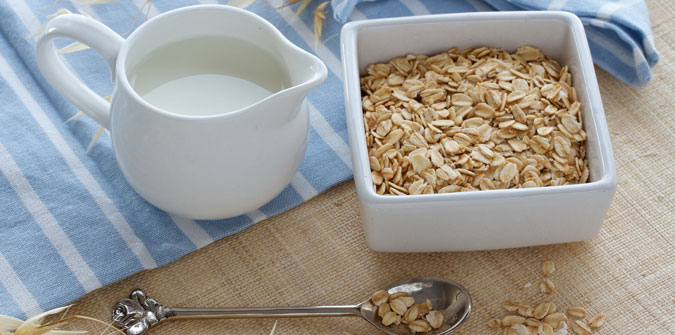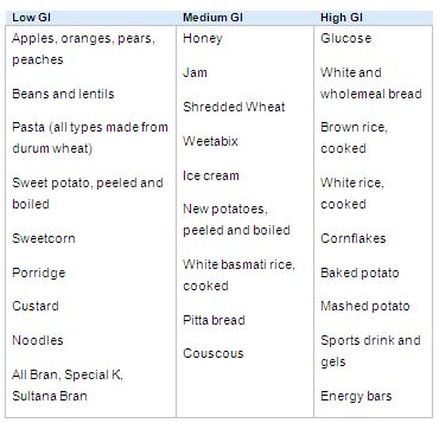Low Gi Diets
A healthy diet should consist of starchy carbohydrates such as pasta, potatoes, cereals, grains and pulses. These are energy containing foods that have not been processed, so contain more nutrients. These carbohydrates tend to have a lower Glycaemic Index (GI) and can keep you feeling fuller for longer and help to regulate blood sugar levels. Anyone looking to improve long-term blood sugar control such as type 2 diabetic patients may benefit from choosing a low GI diet. These diets can also provide sustained energy for those who are very active and help satiety in those trying to lose or maintain weight.
Benefits of a low GI diet
Not all carbohydrates have the same effects on your body. Some carbohydrate foods will give a quick rise in blood sugar levels and others will have a slower response. The Glycaemic Index is a ranking scale of 0-100 comparing different carbohydrate containing foods against glucose. Glucose has a ranking of 100 as it provides a steep immediate rise in blood glucose.
▪ Low GI foods have a ranking of less than 50 and cause a slow steady rise in blood sugar levels.
▪ Foods classified with moderate GI have a ranking of 50 to 70, providing a moderate rise in blood sugars.
▪ High GI foods are classified with a GI ranking greater than 70 causing a rapid rise in blood sugar.
Low GI foods and drink what to look out for
Determining the GI of a meal is not as easy as reading off the ranking number from a chart because the fat and protein content can bring down the GI of the meal. Therefore, chips and crisps have a lower GI than potatoes cooked with no oil. Milk and dairy products have a low GI because of their protein content. It is important to not only consider the GI of foods but also the overall nutritional balance of the diet. Cooking, processing, the ripeness of a fruit and the type of vegetable can also affect the GI. There are many books with lists of the GI of foods, here is a simple table providing the GI ranking of some common foods.
The table below gives an indication of the GI rating for some common foods:
Benefits of a low GI diet
Not all carbohydrates have the same effects on your body. Some carbohydrate foods will give a quick rise in blood sugar levels and others will have a slower response. The Glycaemic Index is a ranking scale of 0-100 comparing different carbohydrate containing foods against glucose. Glucose has a ranking of 100 as it provides a steep immediate rise in blood glucose.
▪ Low GI foods have a ranking of less than 50 and cause a slow steady rise in blood sugar levels.
▪ Foods classified with moderate GI have a ranking of 50 to 70, providing a moderate rise in blood sugars.
▪ High GI foods are classified with a GI ranking greater than 70 causing a rapid rise in blood sugar.
Low GI foods and drink what to look out for
Determining the GI of a meal is not as easy as reading off the ranking number from a chart because the fat and protein content can bring down the GI of the meal. Therefore, chips and crisps have a lower GI than potatoes cooked with no oil. Milk and dairy products have a low GI because of their protein content. It is important to not only consider the GI of foods but also the overall nutritional balance of the diet. Cooking, processing, the ripeness of a fruit and the type of vegetable can also affect the GI. There are many books with lists of the GI of foods, here is a simple table providing the GI ranking of some common foods.
The table below gives an indication of the GI rating for some common foods:
How to keep healthy on a low GI diet
In practice we eat foods in combination with other foods. Therefore, when planning a low GI diet you need to think about the overall balance of your meals. Ensure that it is low in sugar, fat, salt and high in starchy carbohydrates and include a variety of fruit and vegetables. Some good healthy examples:
Breakfast
▪ Use an oat-based breakfast cereal with skimmed milk and berries
▪ Low fat yogurt and berries
▪ Poached eggs on rye toast with apple juice
Snacks
▪ Low GI fruit as snacks (fruits grown in temperate climates; pears, apples, cherries and berries), limit tropical fruit (high GI)
▪ Plain or fruit yoghurt (choose low fat varieties)
▪ Go easy on lower GI foods like chocolate and nuts, which have a high fat content, especially if you are trying to lose weight
▪ Rye bread and fruit loaf (again, watch amounts, especially if you are trying to lose weight)
Lunch
▪ Add baked beans, or lean protein to your jacket potato
▪ Add beans and pulses to soups and salads
▪ Add variety with different breads, eg pitta bread, breads made with mixed Grains, wholegrain and pumpernickel
▪ Lean protein with salad, basmati rice and peas/pulses
Evening meal
▪ Try basmati rice, sweet potato, buckwheat, bulgar wheat, pearl barley and wholemeal noodles with lean protein (beans, pulses, tofu, quorn, fish, chicken, turkey)
▪ Include more vegetables or salads with your meal
▪ Include more beans and pulses (dahl) with meals
Further information
Visit www.glycemicindex.com (University of Sydney, Australia)
In practice we eat foods in combination with other foods. Therefore, when planning a low GI diet you need to think about the overall balance of your meals. Ensure that it is low in sugar, fat, salt and high in starchy carbohydrates and include a variety of fruit and vegetables. Some good healthy examples:
Breakfast
▪ Use an oat-based breakfast cereal with skimmed milk and berries
▪ Low fat yogurt and berries
▪ Poached eggs on rye toast with apple juice
Snacks
▪ Low GI fruit as snacks (fruits grown in temperate climates; pears, apples, cherries and berries), limit tropical fruit (high GI)
▪ Plain or fruit yoghurt (choose low fat varieties)
▪ Go easy on lower GI foods like chocolate and nuts, which have a high fat content, especially if you are trying to lose weight
▪ Rye bread and fruit loaf (again, watch amounts, especially if you are trying to lose weight)
Lunch
▪ Add baked beans, or lean protein to your jacket potato
▪ Add beans and pulses to soups and salads
▪ Add variety with different breads, eg pitta bread, breads made with mixed Grains, wholegrain and pumpernickel
▪ Lean protein with salad, basmati rice and peas/pulses
Evening meal
▪ Try basmati rice, sweet potato, buckwheat, bulgar wheat, pearl barley and wholemeal noodles with lean protein (beans, pulses, tofu, quorn, fish, chicken, turkey)
▪ Include more vegetables or salads with your meal
▪ Include more beans and pulses (dahl) with meals
Further information
Visit www.glycemicindex.com (University of Sydney, Australia)


